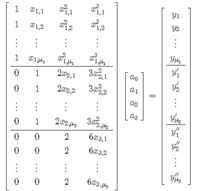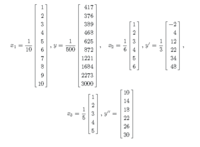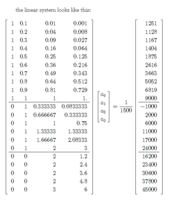markraz
Full Member
- Joined
- Feb 19, 2014
- Messages
- 338
Hi I am trying to learn how to curve fit with derivatives. (I understand derivatives/power rule)
I found an example here: https://math.stackexchange.com/questions/1882772/curve-fitting-with-derivatives
it is illustrated as follows( I hope it's ok that I just cut and pasted):
template

data set

Ax=b

So my question is, how did they get the b vector? (y y' and y" values of the data set.) Where do the numbers 1251?? 1128? 1167 come from? I don't understand. also why do you think he put fractions in front of the vectors in the data set?
Any help would be appreciated
Thanks in advance
I found an example here: https://math.stackexchange.com/questions/1882772/curve-fitting-with-derivatives
it is illustrated as follows( I hope it's ok that I just cut and pasted):
template

data set

Ax=b

So my question is, how did they get the b vector? (y y' and y" values of the data set.) Where do the numbers 1251?? 1128? 1167 come from? I don't understand. also why do you think he put fractions in front of the vectors in the data set?
Any help would be appreciated
Thanks in advance
